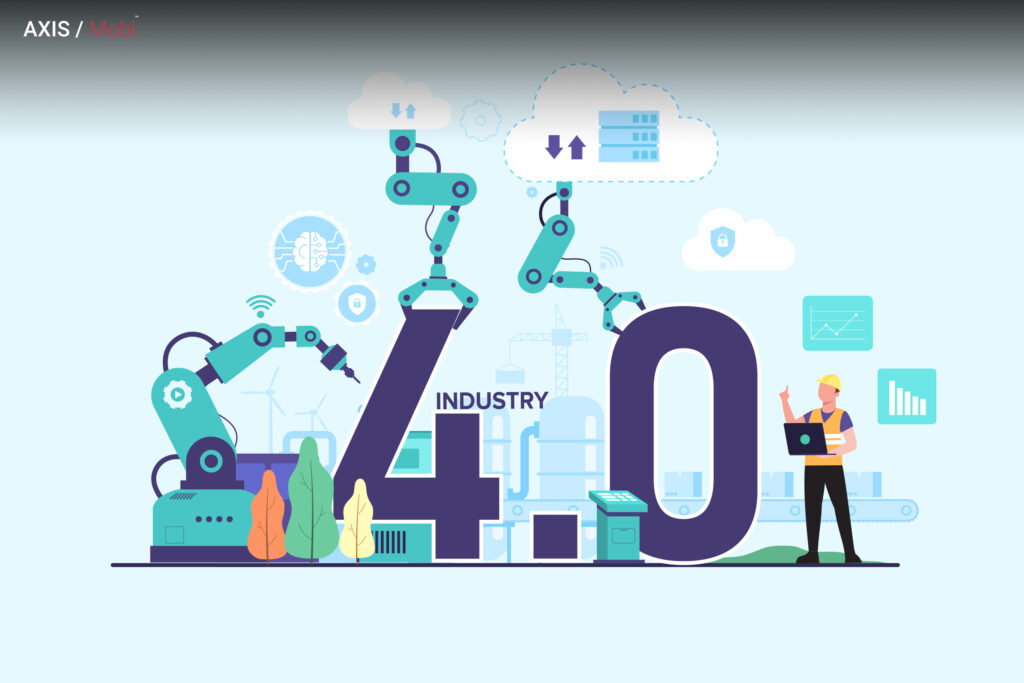The term “Fourth Industrial Revolution” Industry 4.0 was coined by a group of scientists working on a high-tech strategy for the German government. Klaus Schwab, executive chairman of the World Economic Forum (WEF), popularised the phrase in a 2015 Foreign Affairs article. The 2016 World Economic Forum Annual Meeting in Davos-Klosters, Switzerland, had the theme “Mastering the Fourth Industrial Revolution.”
The Forum opened its Centre for the Fourth Industrial Revolution in San Francisco on October 10, 2016. This was also the subject and title of Schwab’s book, published in 2016. Schwab defines the fourth era as technologies combining hardware, software, and biology (cyber-physical systems), emphasizing communication and connectivity advances. Schwab anticipates breakthroughs in emerging technologies such as robotics, artificial intelligence, nanotechnology, quantum computing, biotechnology, the Internet of things, the industrial Internet of things, decentralized consensus, fifth-generation wireless technologies, 3D printing, and fully autonomous vehicles will define this era.
The Fourth Industrial Revolution is included as a Strategic Intelligence in the WEF’s Great Reset proposal as a solution to rebuild the economy sustainably following the COVID-19 pandemic.
THE TIMELINE:

FIRST INDUSTRY REVOLUTION-
The First Industrial Revolution was marked by a shift from manual to machine labour via steam and water power. Because the implementation of new technologies took time, this refers to the period between 1760 and 1820, or 1840 in Europe and the United States. Its effects impacted textile manufacturing, the first to adopt such changes, and the iron industry, agriculture, and mining. Still, it also had societal implications with an expanding middle class. It had an impact on British industry at the time as well.
SECOND INDUSTRIAL REVOLUTION-
The Second Industrial Revolution, also known as the Technological Revolution, occurred between 1871 and 1914 due to extensive railroad and telegraph networks that allowed for faster transfer of people, ideas, and electricity. With increased electrification, factories were able to develop the modern production line. It was a period of rapid economic growth and increased productivity, resulting in increased unemployment as machines replaced many factory workers.
THIRD INDUSTRIAL REVOLUTION-
The Third Industrial Revolution, also known as the Digital Revolution, occurred in the late twentieth century, following the end of the two world wars, and was caused by a slowdown in industrialization and technological advancement compared to previous periods. A decade later, the production of the Z1 computer, which used binary floating-point numbers and Boolean logic, marked the start of more advanced digital developments. The supercomputer was the next significant advancement in communication technologies. With the extensive use of computer and communication technologies in the manufacturing process, machinery began to replace the need for human labour.
FOURTH INDUSTRIAL REVOLUTION-
The Fourth Industrial Revolution, in essence, is the trend toward automation and data exchange in manufacturing technologies and processes such as cyber-physical systems (CPS), IoT, industrial Internet of things, cloud computing, cognitive computing, and artificial intelligence.
The Imagination Age begins with the Fourth Industrial Revolution.
WHY INDUSTRY 4.0 ?
- KEY THEMES:

Industry 4.0 improves operational effectiveness. Four themes that summarise Industry 4.0 are presented:
Interconnection- The ability of machines, devices, sensors, and people to connect and communicate via the Internet of things, also known as the Internet of People (IoP).
Transparency of Information – Industry 4.0 technology provides operators with comprehensive information to make decisions.
Interconnectivity- It enables operators to collect massive amounts of data and information from all points in the manufacturing process, identify critical areas for improvement, and increase functionality.
Technical assistance is the technological capability of systems to assist humans in decision-making and problem-solving and in difficult or dangerous tasks.
Decentralized decision- Cyber-physical systems can make independent decisions and perform tasks as autonomously as possible. Tasks are delegated to a higher level only when exceptions, interference, or competing goals exist.
- CHARACTERISTICS:

The Fourth Industrial Revolution, according to proponents, is a distinct revolution rather than a continuation of the Third Industrial Revolution. This is due to the following features:
Velocity- The rate at which incumbent industries are affected and displaced exponentially.
The Scope and Systemic Impact- Many sectors and firms were affected.
Paradigm shift- New policies designed for this new way of doing are present, signalling a paradigm shift in technology policy. One example is Singapore’s formal recognition of Industry 4.0 in its innovation policies.
Critics of Industry 4.0 dismiss it as a marketing strategy. They contend that, while revolutionary changes are visible in specific sectors, no systemic change has occurred thus far. Furthermore, the rate of Industry 4.0 recognition and policy transition varies by country; the definition of Industry 4.0 is not standardized.
VISION WITH INDUSTRY 4.0:

The Fourth Industrial Revolution is implemented as follows:
- Mobile devices
- Internet of things (IoT) platforms
- Location detection technologies (electronic identification)
- Advanced human-machine interfaces
- Authentication and fraud detection
- Smart sensors
- Big analytics and advanced processes
- Multilevel customer interaction and customer profiling
- Augmented reality/ wearables
- On-demand availability of computer system resources.
- Data visualization and triggered live training.
These technologies are primarily divided into four major components that define the term “Industry 4.0” or “smart factory”:
- Cyber-physical systems
- Internet of things (IoT)
- On-demand availability of computer system resources (e.g. cloud computing)
- Cognitive computing.
Industry 4.0 connects a diverse set of new technologies to create value. A virtual copy of the physical world can be created using cyber-physical systems that monitor biological processes. One of the characteristics of cyber-physical systems is the ability to make decentralized decisions independently, achieving a high degree of autonomy.
The value created in Industry 4.0 can be relied on electronic identification, in which smart manufacturing requires specific technologies to be incorporated in the manufacturing process to be classified as being on the Industry 4.0 development path and not digitization.





Pingback: The Journey of Industry 4.0 (PAST, PRESENT, FUT...